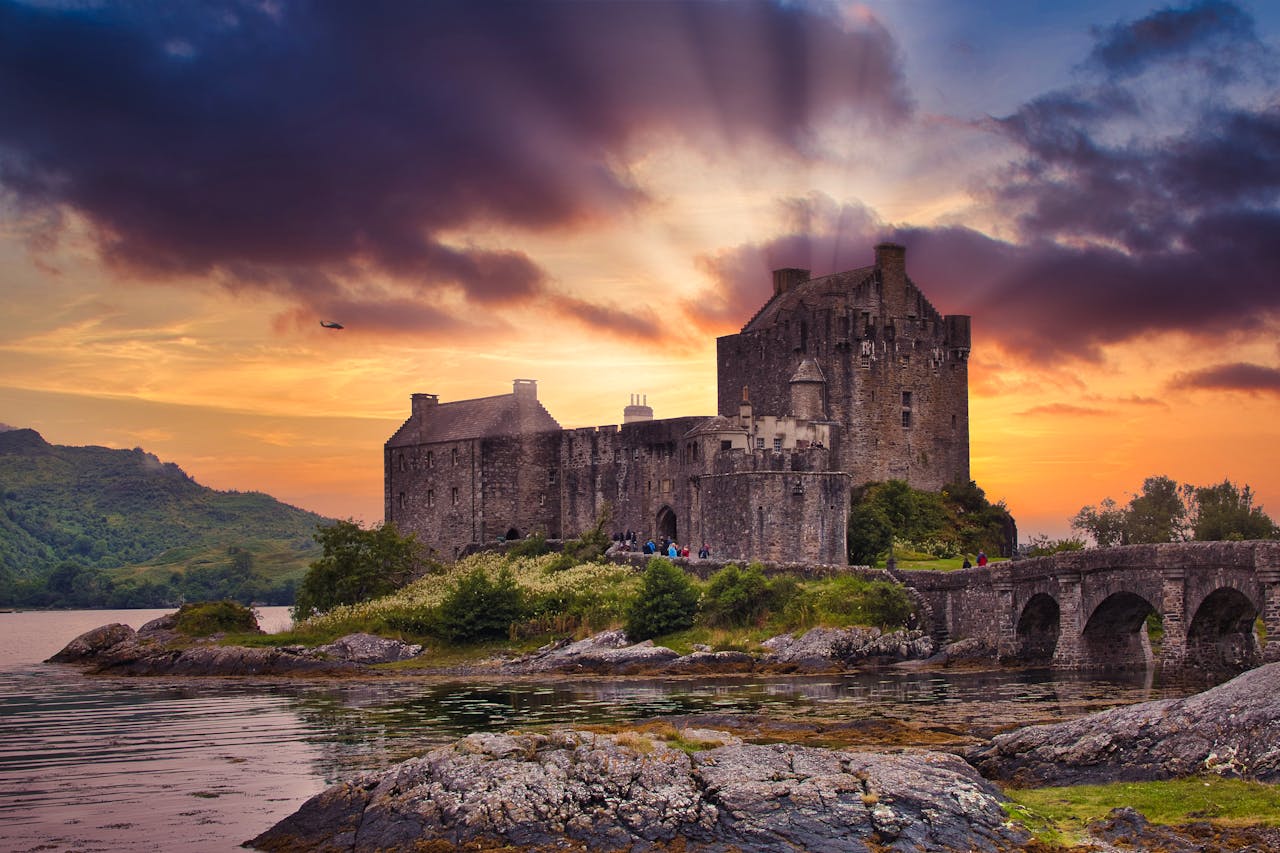History:
The origins of Eilean Donan Castle date back to the 13th century, when it was built as a defensive structure against Viking raids. Its strategic location gave it a commanding view over the surrounding waters, making it an ideal fortification. Over the centuries, the castle became associated with the Clan Mackenzie and their allies, the Clan MacRae, who served as its hereditary constables.
The castle was involved in various conflicts during Scotland’s tumultuous history, including the Jacobite risings of the 17th and 18th centuries. In 1719, it was partly destroyed by the British government after Spanish forces, supporting the Jacobites, occupied it. The castle remained in ruins for nearly 200 years.
Restoration:
In the early 20th century, Eilean Donan was meticulously restored by Lieutenant Colonel John MacRae-Gilstrap, who took ownership of the island in 1911. Over 20 years, he and his team rebuilt the castle using surviving records and architectural features to restore it to its former glory. The castle as it stands today is largely a result of this restoration, completed in 1932, although it retains elements of its medieval design.
Architecture:
The castle is a classic example of a Scottish stronghold, with thick stone walls, battlements, and narrow windows designed for defence. A picturesque stone bridge, added during the restoration, connects the island to the mainland. Inside, the castle features period rooms, artefacts, and displays that tell the history of the clans and the structure itself.
Popular Culture and Tourism:
Eilean Donan Castle’s breathtaking location and romantic appearance have made it a favourite filming location, appearing in films such as Highlander (1986) and The World Is Not Enough (1999). It also attracts thousands of visitors each year, eager to explore its historic interiors and enjoy the surrounding natural beauty. It is open to the public, offering tours, exhibitions, and stunning views of the Highlands and the Isle of Skye in the distance.


